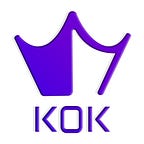[Wise Crypto Life] 05. Mining Edition
[Wise Crypto Life] 05. Mining Edition
How are cryptocurrencies made?
How cryptocurrency and traditional currency are issued.
The traditional paper money we generally know is issued by the central banks of each country. The central bank has significant responsibility of ‘price management’ and exerts great influence on the national economy, including controlling the amount of currency and determining the base interest rate.
However, cryptocurrency is generated by a number of nodes, not through issuing institutions such as the central bank. The records of issuance and transactions are chained and stored in a decentralized manner ensures transparency without central authority control. This process of creating cryptocurrency is called ‘Mining’.
Mining Methods
There are three representative methods of mining
1. Proof of Work (PoW): Participants use computers to repeatedly search for hashes with specific conditions. If they succeed, they will receive cryptocurrency as compensation. To find this value, high-performance hardware is required, and electricity consumption is enormous. Moreover, the mining competition is getting fiercer as we get closer to the total amount of money issued. Well-known major cryptocurrencies such as Bitcoin, Ethereum, and Litecoin are created through this method.
2. Proof of Stake (PoS): PoS is a new mining method that emerged to solve the problems pointed out as the weakness of PoW, such as power consumption and fierce competition. In this way, participants do not need high-performance computers, miners, or large amounts of electrical energy. As long as they have the cryptocurrency, they can receive decision-making authority and compensation based on their holdings. It is a similar concept to depositing in a bank or holding stock and exercising authority as shareholders. Although it has solved the mass energy consumption disadvantage of PoW, , this method makes it easy to concentrate funds on a few people who hold the majority of shares. Quantum, Neo, etc. are created this way.
3. Delegated Proof of Stake (DPoS): It is a mining method that introduces a method of electing representatives to PoS. Mining is done by a privileged minority, so it boasts faster processing speed than PoS. However, it has also been pointed out that a small number of nodes could monopolize the authority if the turnout is low. A representative example of a cryptocurrency created in this way is EOS.
What is the future mining trend?
Not long ago, Tesla’s CEO Elon Musk, who was so interested in the cryptocurrency market that he added Master of Coin to his title, withdrew the policy that allowed for Tesla to be bought with Bitcoin, causing a stir in the cryptocurrency market. Elon Musk mentioned the reason behind making this decision was ‘becauses Bitcoin consumes too much energy’, since Bitcoin is mined using a proof-of-work (PoW) method.
Although Bitcoin has been on the decline recently, the graphics card crisis for mining is still not over, with mining competition and the pursuit of better mining methods still ongoing. It is important to keep an eye out on which mining method will become a more efficient and reasonable alternative in the future.
#KOK #KOK_Chain #KOK_Token #KOK_Coin #ZBG #Bithumb_Global #Blockchain #ERC20 #Bitcoin #Cryptocurrency #Digital_contents_platform #decentralization
